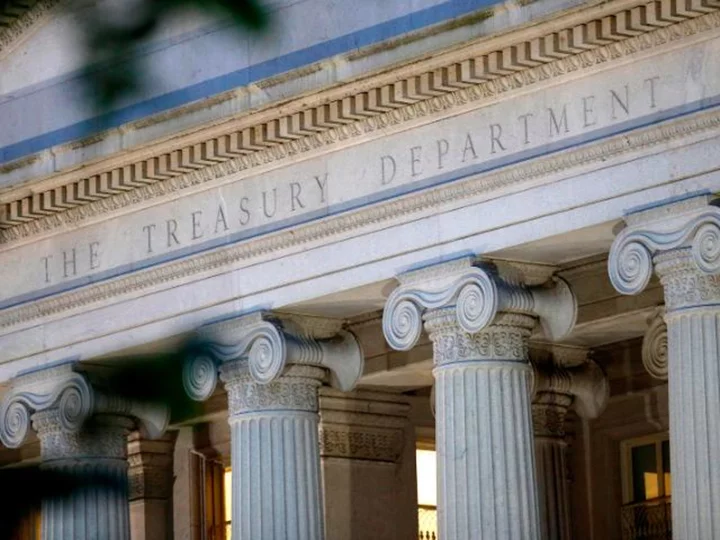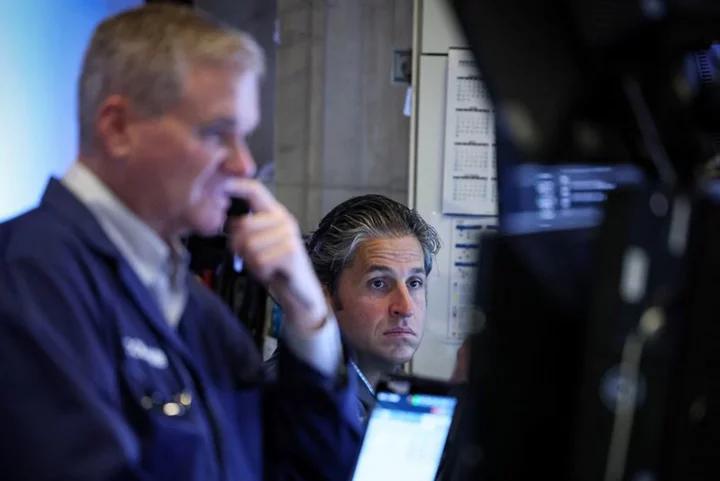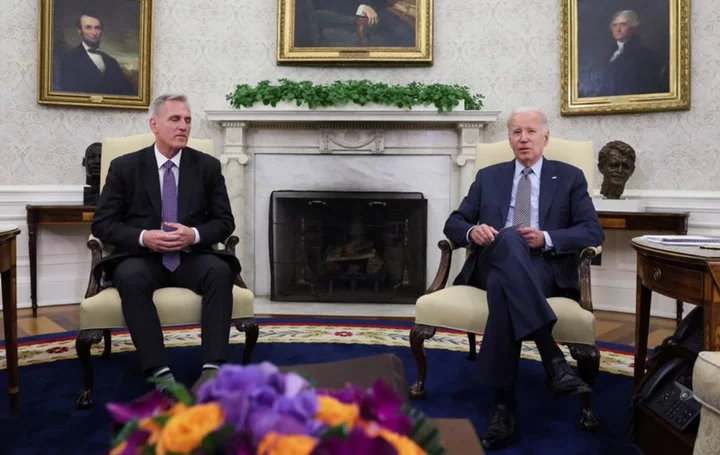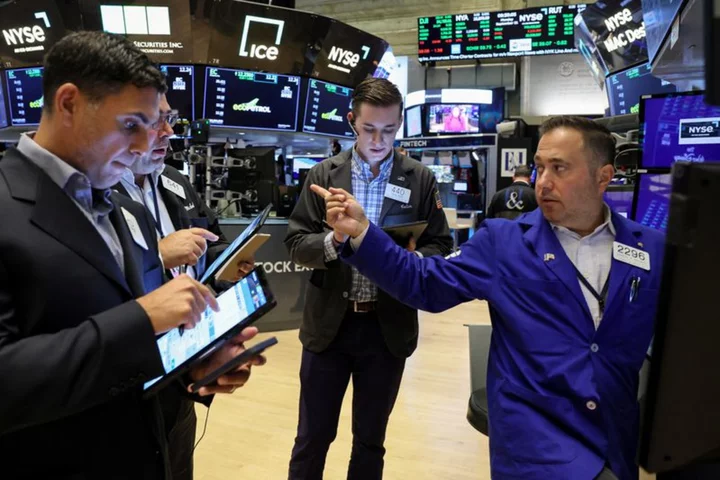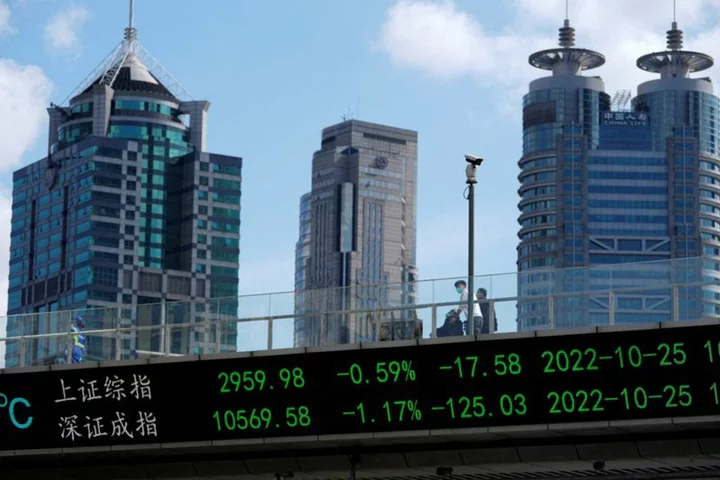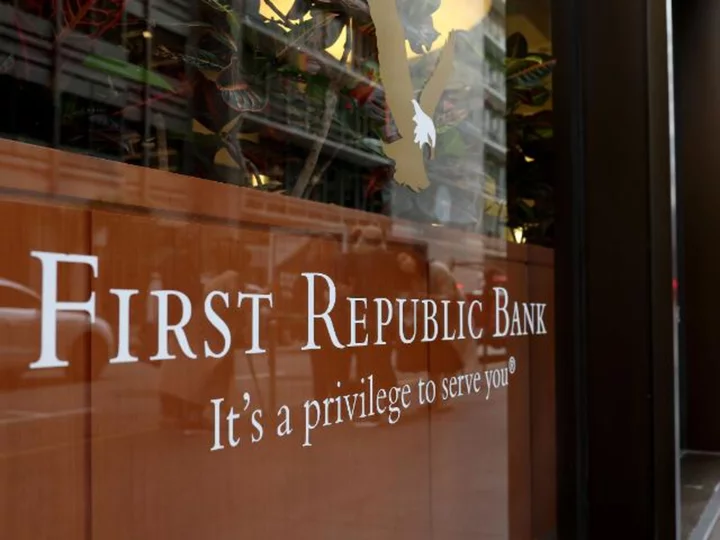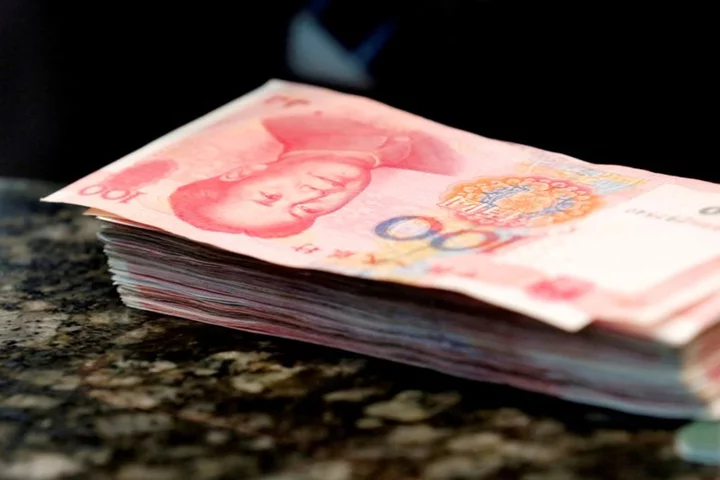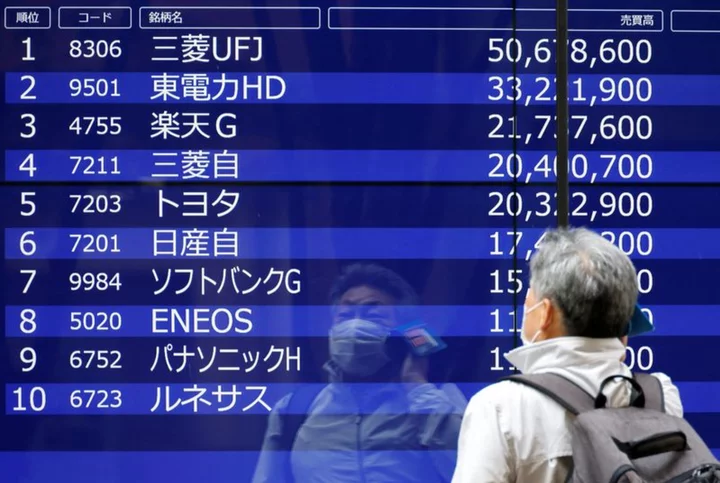No one can say yet which day the US Treasury would no longer be able to pay all the bills of the United States in full and on time if lawmakers refuse to raise the debt limit.
That day — the so-called "X-date" — is currently estimated to fall sometime between early June and early August.
Bond market experts still expect lawmakers to strike a deal before the X-date hits, if only at the 11th hour and 59th minute.
"[N]o one in Washington has any incentive to see the US default ... [but] no one is also really incentivized to compromise before the actual deadline..... Nevertheless, we remain confident that a deal will happen in time to avoid any sort of breach," said Libby Cantrill, managing director and head of public policy at PIMCO.
But even if that's the case, between now and then bond investors should expect volatility.
"As long as the discussions are ongoing between the Biden administration and Congress, we'd expect volatility to be relatively elevated," said Collin Martin, director and fixed income strategist at the Schwab Center for Financial Research.
Bond investors are all about pricing in the risk that they may not be paid back on debt they buy — either on time or at all. Normally, US Treasuries are considered to be the world's safest assets because they are backed by the full faith and credit of the United States. But the lack of a deal to raise lawmakers' self-imposed debt ceiling so close to the X-date is introducing unwanted risk into each investor's calculus.
"We've already seen some pricing stress around short-term bills, Treasury bills, and a little bit of change in the... sovereign credit default swap spreads," said Gary Gensler, chair of the Securities and Exchange Commission, at an event on Monday.
Short-term Treasury bills that mature on June 1 or soon thereafter have seen a spike in yields in the past month, indicating investors want to be paid more for taking on what they perceive to be higher risk that they may not be paid back on time.
That's an important distinction from assuming they won't be paid back in full, Martin notes. The assumption is that even if the United States briefly goes past the X-date, it will resolve things quickly and will make good on all the payments it must make. In contrast to corporate debt, the risk is that a bond investor would only be able to recover a portion of their investment. "But with Treasuries, it's more about 'When will I get the money back?'" he said.
Right now, yields on one-month T bills are well above the yields for 10-year and 30-year Treasury bonds. For bills maturing on or before May 30, yields have fallen and their prices have risen because investors are willing to pay up to have a near guarantee of prompt repayment, Martin noted.
So what, if anything, should bond investors do now?
Those who have invested in Treasury bills maturing on or right after June 1 and who definitely need their money at that time — for example, to pay their own bills — might consider selling those bills now and reinvesting in bills that mature sooner, Martin suggested.
If you're invested in bond funds, check to see that the bond portion of your portfolio has adequate exposure to intermediate and longer-term bonds, rather than being too heavily weighted toward short-term higher yielding bonds. With the latter, "you face reinvestment risk down the road when it might be better to lock in rates with certainty now," he said. Those rates are currently running between 3.5% to 4%.
And to the extent there is any uncertainty about being paid on time by the Treasury, there may be a flight to 10-year Treasury bonds — which means their prices will go up, which can help buffer your portfolio. "They are still the most liquid investment and the safest investment out there," Martin said.
When it comes to your exposure to bonds other than Treasuries, Martin recommends sticking more heavily with high-quality investments, rather than corporate junk bonds or emerging market bonds. The reason: If the economy turns south — or the unthinkable happens and the United States does default on its debt — those high-risk debt instruments will come under the most pressure.
"If you need to borrow money, you need the confidence of the markets to lend to you," Martin said. If there is a recession or any concern about the Treasury paying back investors on time, there will be less confidence to go around.
As for your 401(k), Martin said the best thing you can do now is to review your equity-to-bond allocation and make adjustments if necessary. As we move closer to June, stocks are likely to see a lot more volatility because they are inherently riskier assets than bonds.
Considering the longer-term picture for your investments is also the advice from Vanguard, according to spokesperson Jessica Schifalacqua.
"Our general guidance is for investors to maintain a balanced portfolio in keeping with their goals and to remain disciplined. A long-term view is especially important during periods of uncertainty," she said.
-- CNN's Elisabeth Buchwald contributed to this report

